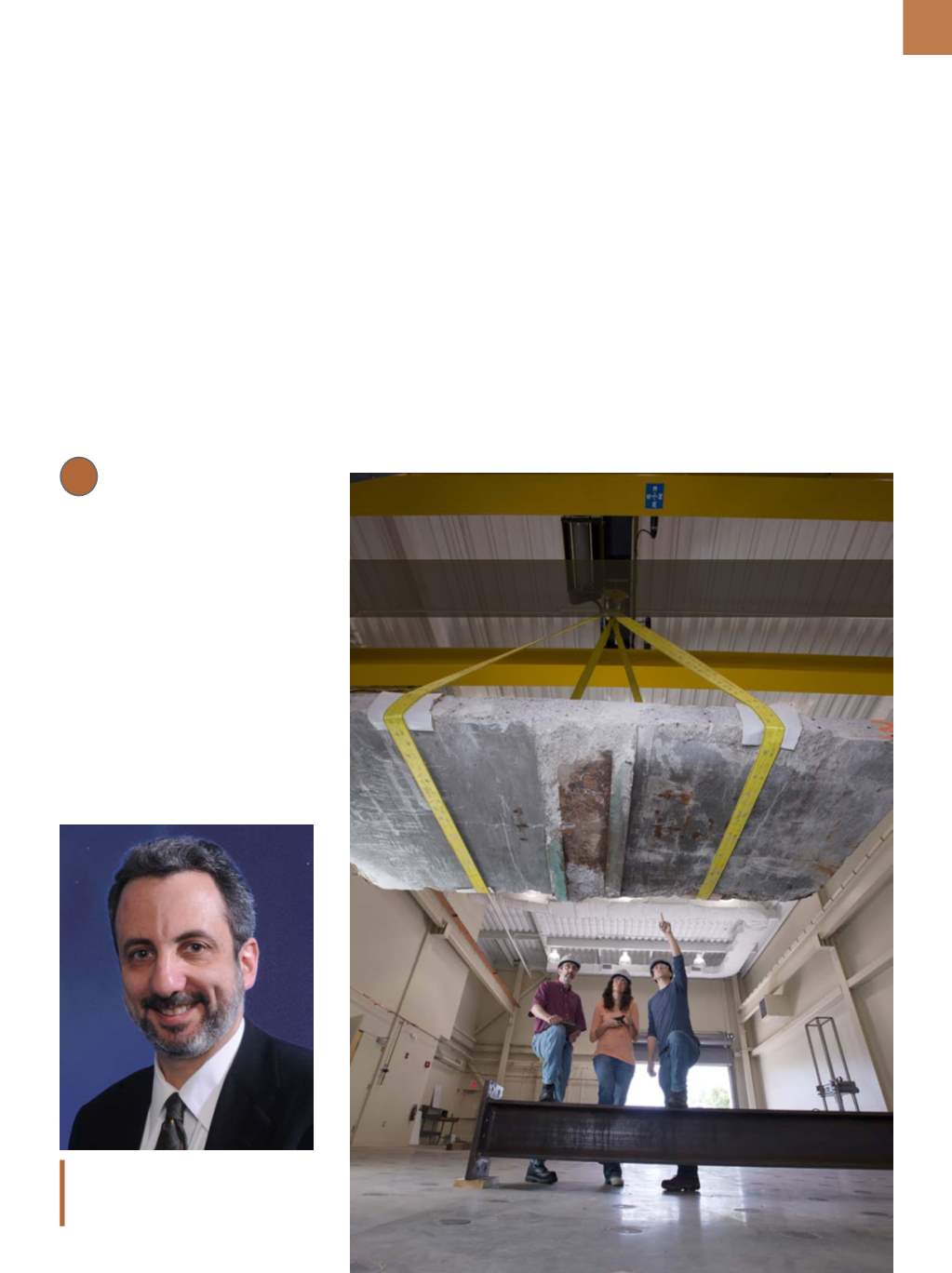

A D V A N C E D
M A T E R I A L S
&
P R O C E S S E S |
N O V E M B E R / D E C E M B E R
2 0 1 5
2 3
One testing trend in plastics de-
sign is to subject sample material to
extreme conditions. For example, when
researching roof shingles made of recy-
cled material, mechanical properties
such as flame retardancy and impact
resilience must withstand extreme heat
and hurricane-force winds. Another ex-
ample Malloy cites is snap-in hubcaps.
“The material must be tested accord-
ing to cold day driving, such as at -40°F,
versus the temperature specified in the
ASTM standard,” he explains. “In plas-
tics, this type of testing is increasing in
both volume and sophistication. Test-
ing is key to answering the ‘will it work’
question. There is only somuch one can
do with theories.”
3
INNOVATIVE BUILDING
MATERIALS
“In civil engineering, anything
that is expected to take any reason-
able level of stress and strain or be
subjected to elevated temperatures or
to a lot of moisture needs to be test-
ed and characterized,” says Jerome
(Jerry)
Hajjar, chair of Northeastern
University’s department of civil and en-
vironmental engineering. The school’s
Structural Testing of Resilient and Sus-
tainable Systems (STReSS) lab focuses
on the security and sustainability of
structures against hazards and events,
whether manmade or natural. Among
the lab’s current projects is the devel-
opment of deconstructable systems for
sustainable steel structures to create
reusable building materials. STReSS
Lab conducts large or full-scale compo-
nent tests of clamping connections and
experimental tests of deconstructable
composite floor systems subjected to
gravity and lateral loading. The team
is also researching foam materials that
can be used in a cladding system to
harness and store energy from the sun
or wind.
“One of the challenges in civil en-
gineering is that while engineers de-
sign structures not to collapse in major
events, we’re not very good at mim-
icking collapse in simulated environ-
ments,” says Hajjar. Whereas tension or
shear failures can be quantified using
standard test procedures, multiple forc-
es are at play during a major event such
as an earthquake or tsunami. Helping
to meet this challenge is the profes-
sion’s increasing capability to simulate
at the atomic and molecular level.
The more microscopic the under-
standing of how a material behaves,
the greater likelihood engineers can
design new materials and associated
structural systems capable of with-
standing extreme loads. One example is
Hajjar’s research into using replaceable
Jerome Hajjar, civil and environmental
engineering department chair, Northeast-
ern University.
Professor Jerome Hajjar of Northeastern University, left, confers with students during a
materials test.


















